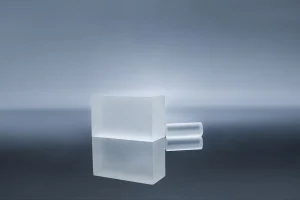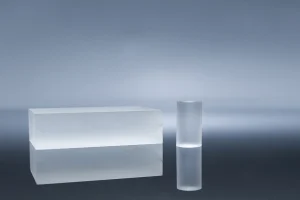Introduction
Laser crystals, the heart of any laser system, have been a subject of fascination for both beginners and enthusiasts. These unique crystals, with their ability to amplify light, have revolutionized various industries, from medicine to telecommunications. This comprehensive guide aims to answer the most common questions about laser crystals, providing a deep dive into their intriguing world.
Understanding Laser Crystals
Understanding laser crystals requires delving into the realm of physics and material science. These crystals, often made from doped materials, are the heart of any laser system. The term “doping” refers to the process of adding impurities to a crystal to alter its properties. This is done to enhance the crystal’s ability to amplify light, a fundamental characteristic that defines a laser crystal. The doping process involves the use of various elements, with the choice depending on the desired properties of the laser. For instance, Neodymium (Nd) and Erbium (Er) are often used for their unique luminescent properties.
The property of luminescence, which is the ability to emit light when excited by an external energy source, is what sets laser crystals apart. When these crystals are exposed to a source f energy, such as an electric current or another laser, their atoms absorb this energy and move to an excited state. This state is unstable, and the atoms soon return to their ground state, releasing the absorbed energy in the form of light. This light emission is what we commonly refer to as luminescence.
However, in a laser crystal, this process is a bit more complex and controlled. The emitted light is trapped within the crystal, bouncing back and forth between its ends. This leads to a chain reaction where the light stimulates other excited atoms to emit more light of the same wavelength, leading to a cascade of light amplification. This amplified light, coherent and of a single wavelength, is what we know as a laser beam.
The ability of laser crystals to produce this highly concentrated beam of light has found applications in various fields. In the medical field, for instance, lasers are used in surgical procedures for their precision and minimally invasive nature. In the telecommunications industry, lasers are used in fiber optics to transmit data over long distances with minimal loss. In the manufacturing industry, lasers are used for cutting, welding, and engraving materials with high precision. Even in everyday life, we encounter laser technology in the form of barcode scanners, DVD players, and laser printers.
In conclusion, understanding laser crystals is key to understanding the working of these various applications. These crystals, with their unique ability to amplify light, have revolutionized technology in many ways. As we continue to explore and develop new types of laser crystals, we can expect to see even more innovative applications of laser technology in the future.

What are Laser Crystals Made of?
Laser crystals are typically made from a base material that is doped with specific impurities to create the desired lasing properties. The base material, often a type of crystal, is chosen for its optical properties, such as its ability to transmit light and its refractive index. The doping process involves introducing atoms of a different element into the crystal lattice of the base material. The choice of dopant is critical as it determines the wavelength of the laser light produced.
Common base materials include synthetic crystals like Yttrium Aluminum Garnet (YAG), Sapphire, and various types of glass. These materials are chosen for their high optical quality, thermal conductivity, and mechanical strength. The dopants are typically rare-earth elements such as Neodymium (Nd), Erbium (Er), or Thulium (Tm), although other elements like Chromium (Cr) are also used. For instance, a Ruby laser crystal is made from a Sapphire crystal that is doped with Chromium, while a Nd:YAG laser crystal is made from Yttrium Aluminum Garnet doped with Neodymium.
The process of making a laser crystal involves growing a synthetic crystal, introducing the dopant, and then cutting and polishing the crystal into the desired shape. The crystal growth process requires precise control over temperature and pressure to ensure a high-quality crystal with few defects. The doping process involves incorporating the dopant atoms into the crystal lattice during the growth process. The resulting laser crystal is a piece of material with unique properties, capable of amplifying light to produce a laser beam.
In conclusion, the composition of a laser crystal involves a careful selection of base material and dopant, and a meticulous manufacturing process to ensure the highest quality. The result is a crystal that is not only beautiful to look at, but also possesses the remarkable ability to produce laser light.

The Role of Laser Crystals in Laser Technology
The role of laser crystals in laser technology is pivotal as they serve as the active medium that produces the laser light. The fundamental principle of laser operation, known as stimulated emission, occurs within these crystals. When the atoms in the laser crystal absorb energy from an external source, they move to an excited state. As they return to their ground state, they emit photons. In a laser crystal, this process is carefully controlled to ensure that the emitted photons stimulate other excited atoms to emit more photons of the same wavelength. This results in a cascade of light amplification, producing a coherent and highly concentrated beam of light, which is the laser beam. The laser crystal thus acts as the heart of the laser system, driving the process of light amplification. The choice of laser crystal, including the type of base material and dopant, determines the properties of the laser light, such as its wavelength, power, and mode of operation. Therefore, the role of laser crystals in laser technology is not only central but also multifaceted, influencing the performance and application of the laser system.
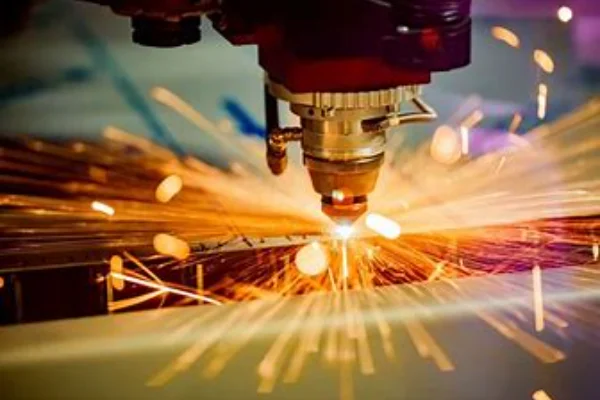
How Do Laser Crystals Work?
Laser crystals work based on the principle of stimulated emission, a process that was first postulated by Albert Einstein. When a laser crystal is energized by an external source, such as a flashlamp or another laser, the atoms in the crystal absorb this energy and move to an excited state. This state is unstable, and the atoms soon return to their ground state, releasing the absorbed energy in the form of light. However, in a laser crystal, this process is carefully controlled. The emitted light is trapped within the crystal, bouncing back and forth between its ends. This leads to a chain reaction where the light stimulates other excited atoms to emit more light of the same wavelength, leading to a cascade of light amplification. This amplified light, coherent and of a single wavelength, is what we know as a laser beam. The laser crystal thus serves as the active medium in a laser system, driving the process of light amplification and determining the properties of the laser light. The choice of laser crystal, including the type of base material and dopant, influences the performance and application of the laser system.
Types of Laser Crystals
There are several types of laser crystals, each with unique properties and applications. Some of the most commonly used ones include:
Yttrium Aluminum Garnet (YAG)
Yttrium Aluminum Garnet, commonly known as YAG, is a synthetic crystal that is widely used in laser technology. When doped with Neodymium (Nd), the resulting Nd:YAG crystal becomes an efficient lasing medium. The Neodymium ions provide the energy levels necessary for lasing, while the YAG crystal provides a stable and durable host. Nd:YAG lasers produce light with a wavelength of 1064 nanometers in the infrared region, which is invisible to the human eye. However, with the use of frequency doubling crystals, this light can be converted to 532 nanometers, producing a green laser beam that is visible and commonly used in various applications. The high thermal conductivity of Nd:YAG crystals makes them ideal for high-power continuous operation. They can withstand high power densities and operate at high ambient temperatures, making them suitable for industrial applications such as cutting and welding. Furthermore, Nd:YAG lasers can be operated in a pulsed mode, which is useful in medical applications for procedures like laser eye surgery. In summary, the versatility, durability, and high thermal conductivity of Nd:YAG crystals have made them a popular choice in laser technology, serving a wide range of applications from industrial machining to medical treatments.
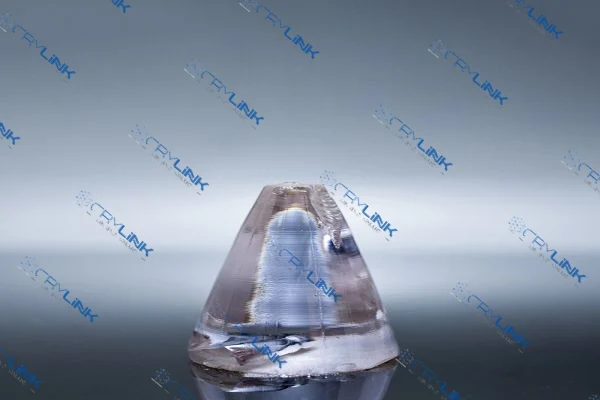
Rare-Earth Doped Crystals
Rare-earth doped crystals are a significant category of laser crystals that have found extensive use in various fields. The term “rare-earth” refers to a set of 17 elements in the periodic table, known for their unique electronic properties. When these elements are used as dopants in laser crystals, they can significantly enhance the lasing characteristics of the crystal. Erbium (Er) and Thulium (Tm) are two such rare-earth elements commonly used in laser technology.
Erbium-doped crystals, for instance, are widely used in the telecommunications industry. Erbium-Doped Fiber Amplifiers (EDFAs) are a key component in modern optical communication systems, allowing for the amplification of signals over long distances without the need for electronic repeaters. The Erbium ions in the fiber amplify the light signal, enabling it to travel further without significant loss of quality or strength.
Thulium-doped crystals, on the other hand, are known for their ability to produce efficient lasers in the 2-micrometer wavelength region. This wavelength is particularly useful in medical applications, as it is strongly absorbed by water and biological tissue, allowing for precise cutting and coagulation with minimal thermal damage.
In conclusion, rare-earth doped crystals, with their unique lasing properties, have become an integral part of modern laser technology, enabling advancements in fields as diverse as telecommunications and medicine.
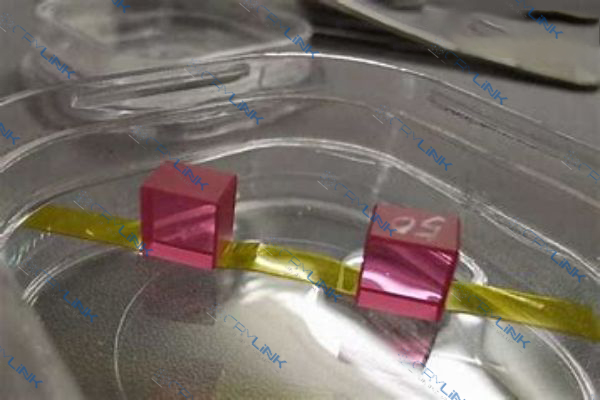
Applications of Laser Crystals
Laser crystals, with their ability to amplify light, have found applications in a multitude of fields. In the medical field, laser crystals are used in a variety of diagnostic and therapeutic procedures. For instance, in ophthalmology, lasers are used for vision correction surgeries such as LASIK, while in dermatology, they are used for procedures like skin resurfacing and tattoo removal. The precision and control offered by lasers make them an invaluable tool in these sensitive procedures.
In the telecommunications industry, laser crystals play a crucial role in optical fiber communication systems. The light signals in these systems are amplified using devices like Erbium-Doped Fiber Amplifiers (EDFAs), which rely on Erbium-doped laser crystals. This allows for high-speed data transmission over long distances, making global internet connectivity possible.
In the industrial sector, laser crystals are used in various manufacturing processes. High-power lasers, often using Nd:YAG crystals, are used for cutting, welding, and engraving materials with high precision. These lasers have revolutionized manufacturing, enabling the production of complex and intricate components with high efficiency.
In research and development, laser crystals are used in a variety of scientific instruments, from spectrometers to particle accelerators. The unique properties of laser light, such as its coherence and monochromaticity, make it an invaluable tool in scientific research.
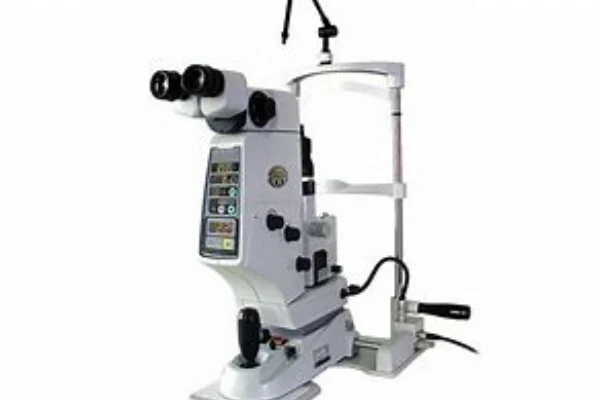
Conclusion
Understanding laser crystals is key to appreciating the vast potential of laser technology. From their unique properties to their diverse applications, these crystals continue to shape our world in numerous ways. As we continue to explore their potential, one thing is clear: the future of laser crystals is as bright as the light they emit.
Frequently Asked Questions
- What is a laser crystal?
A laser crystal is a crystal that can amplify light, forming the active medium in a laser system. - How does a laser crystal work?
A laser crystal works by absorbing energy from an external source, causing its atoms to emit photons, which are then amplified to produce a coherent light beam. - What are some common types of laser crystals?
Common types of laser crystals include Yttrium Aluminum Garnet (YAG), Ruby, and crystals doped with rare-earth elements such as Neodymium and Erbium. - What are laser crystals used for?
Laser crystals are used in a variety of applications, including medicine, telecommunications, and industrial processes. - What is doping in the context of laser crystals?
Doping involves adding impurities to a crystal to alter its properties, enabling it to function as a laser medium.


